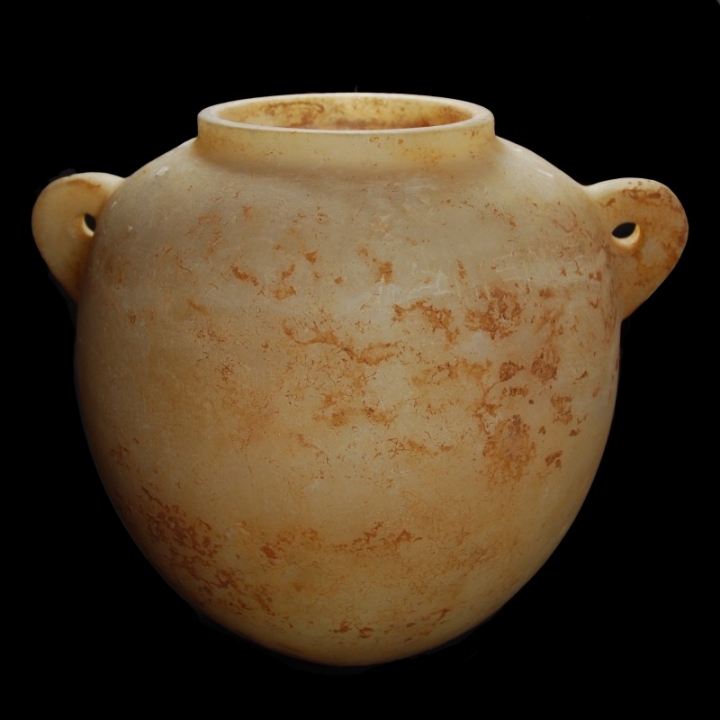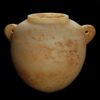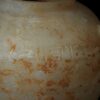Large Alabaster Vase with the Name of Iuwelot
Culture: Egyptian
Period: Third Intermediate Period, 22nd dynasty, around 894-884 B.C.
Material: Alabaster
Dimensions: 32 cm high
Price: Sold
Ref: 1215
Provenance: English private collection, thence Sotheby’s London on 11 December 1989, lot 54. Thence in an American collection. Thence Sotheby’s New York on 11 December 2002, lot 111. Last in a private US collection.
Condition: The inscription partly levigated, otherwise intact.
Description: Large and historically important stone vase of alabaster with a round corpus, short, circular pierced handles and a vertical, straight rim, with an inscription on one side of the shoulder. Therein the High Priest of Amun named Iuwelot is mentioned. He donates this vase to “the great Goddess Mut, Mistress of the Holy Lake Isheru, Eye of Re, Sovereign of all Gods”. The inscription suggests that this vase originates from Karnak and was offered by Iuwelot, a High Priest active during the 22nd dynasty in Thebes. He originated from the Libyan dynasty, which ruled in Egypt during the Third Intermediate Period and who was the son of pharaoh Osorkon I. When his brother Takelot I. took over as pharaoh there might have been tensions between both brothers. Iuwelot ruled as an Amun priest and highest military commander to the borders of Asyut. In today known inscriptions the name of the pharaoh in the north was deliberately omitted. There are only a few objects preserved from Iuwelot himself, which carry his name, amongst them his funerary stele from Thebes, which is today in the British Museum. Iuwelot’s wife’s name was Tadenitenbast, the pair had at least one daughter and two sons.





